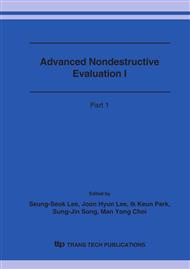p.1103
p.1107
p.1111
p.1115
p.1119
p.1123
p.1129
p.1133
p.1139
The Effects of High-Heeled Posture on COP Kinematics and Muscle Fatigue during the Balance Control of Human Body
Abstract:
This study addressed the effect of balance control problems on the high-heeled women. The specific purposes of this study are to quantify the displacements and velocities of center-of-pressure (COP) of a body during waist pulling perturbation and to compare the differences between the bare-feet and the high-heeled. Another purpose of the study is to identify the effects of a high-heeled posture on electromyography (EMG) activities and muscle fatigue. We used a waist pulling system which has three different magnitudes to sway the subjects. The COP displacement of a high-heeled posture was about twice as much as that of bare-feet posture. Also the COP velocity of a high-heeled posture became about twice as much as that of bare-feet posture. Muscle fatigue could be identified by the shift of the median frequency (MF) of the EMG power spectrum toward lower frequencies. Median frequency of the EMG power spectrum from tibialis anterior was reduced more rapidly during high-heeled situation than during bare-feet situation. COP kinematics and muscle fatigue analysis in postural balance researches are considered to provide useful information in understanding the balance control mechanism of women’s high-heeled posture.
Info:
Periodical:
Pages:
1119-1122
Citation:
Online since:
October 2006
Authors:
Keywords:
Price:
Сopyright:
© 2006 Trans Tech Publications Ltd. All Rights Reserved
Share:
Citation:


